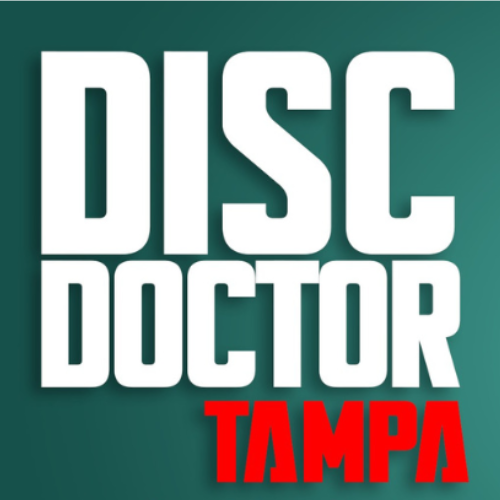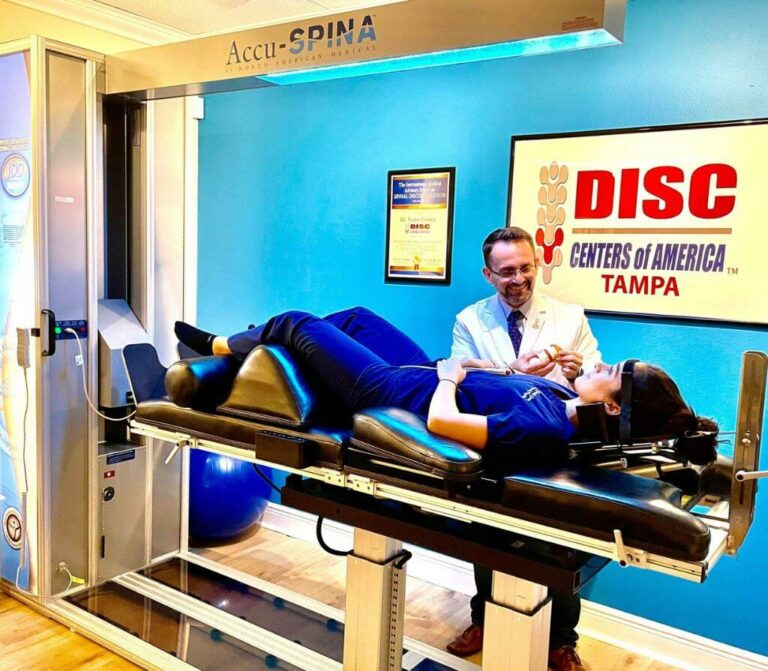In this article, we will delve into the often misunderstood topic of pulled muscles and pinched nerves. Many individuals experience pain and discomfort in their musculoskeletal system at some point in their lives, but it can be challenging to determine whether the issue stems from a pulled muscle or a pinched nerve. Understanding the differences between these conditions is crucial for accurate diagnosis and effective treatment. So, let’s explore the nuances of pulled muscles and pinched nerves and shed light on how Dr. Gomez Chiropractic can help you find relief.
Pulled Muscles
Pulled muscles, also known as muscle strains, occur when the muscle fibers are overstretched or torn. They commonly result from sudden or forceful movements, overexertion, or inadequate warm-up before physical activity.
Signs and Symptoms:
- Sharp pain at the site of the injury.
- Swelling, bruising, or redness.
- Muscle weakness or difficulty moving.
- Muscle spasms or cramps.
- Restricted range of motion.
Diagnosis and Treatment:
To accurately diagnose a pulled muscle, Dr. Gomez Chiropractic will perform a comprehensive physical examination and assess your medical history. Imaging tests such as X-rays or MRI scans may be recommended to rule out other underlying conditions. Treatment options may include:
- Rest, ice, compression, and elevation (RICE).
- Nonsteroidal anti-inflammatory drugs (NSAIDs) for pain and inflammation.
- Gentle stretching and strengthening exercises.
- Massage therapy or manual manipulation to promote healing and relieve tension.
- Physical therapy to aid in rehabilitation.
Pinched Nerves
Pinched nerves occur when excessive pressure is applied to a nerve by surrounding tissues such as muscles, tendons, or bones.
Signs and Symptoms:
- Radiating pain or numbness along the pathway of the affected nerve.
- Tingling or a “pins and needles” sensation
- Muscle weakness or loss of function.
- Increased pain with certain movements or positions.
- Reduced reflexes in the affected area.
Diagnosis and Treatment:
Dr. Gomez Chiropractic will conduct a thorough examination, focusing on your symptoms and performing various orthopedic and neurological tests. Additional diagnostic tests, such as Magnetic Resonance Imaging (MRI), may be necessary to assess nerve function. Treatment options may include:
- Chiropractic adjustments to alleviate pressure on the affected nerve.
- Physical therapy exercises to improve flexibility, strengthen supporting muscles, and relieve pressure.
- Posture correction techniques to prevent recurring compression.
- Heat or cold therapy to reduce inflammation and alleviate pain.
- Lifestyle modifications, such as ergonomic adjustments and avoiding repetitive motions that exacerbate the condition.
Differentiating Between Pulled Muscles and Pinched Nerves
While pulled muscles and pinched nerves may share some overlapping symptoms, key differences can help in distinguishing between the two conditions.
Differentiating Factors:
- Nature of Pain: Pulled muscles often cause localized pain, while pinched nerves can result in radiating pain along the nerve pathway.
- Sensory Changes: Pinched nerves commonly lead to tingling, numbness, or a pins and needles sensation, which is not typically associated with pulled muscles.
- Muscle Weakness: Pinched nerves may cause muscle weakness or loss of function, while pulled muscles generally do not affect muscle strength.
- Triggers: Pulled muscles often result from sudden or forceful movements, while pinched nerves can be triggered by repetitive motions or poor posture.
Prevention and Self-Care Tips
Preventing both pulled muscles and pinched nerves is essential for maintaining a healthy musculoskeletal system. By following these preventive measures and self-care tips, you can reduce the risk of experiencing these conditions in the first place.
- Warm-Up and Stretching: Prior to engaging in any physical activity or exercise, ensure that you warm up adequately. Incorporate dynamic stretching exercises that target the muscles you will be using. This helps prepare your muscles for the activity and reduces the risk of strains or overexertion.
- Proper Body Mechanics: Maintain proper posture and body mechanics during daily activities and while exercising. This includes lifting heavy objects using your legs rather than your back, sitting with good posture, and avoiding prolonged periods of sitting or standing in one position.
- Strength and Flexibility Training: Regularly engage in exercises that improve muscle strength and flexibility. Strong muscles provide better support to your joints, reducing the risk of injuries. Incorporate exercises that target all major muscle groups and include both resistance training and stretching.
- Ergonomic Workspace: Ensure that your workspace is ergonomically designed to promote proper posture and reduce strain on your muscles and nerves. Adjust your chair, desk, and computer screen to maintain neutral body alignment. Take regular breaks to stretch and move around.
- Rest and Recovery: Give your body ample time to rest and recover after physical activity. This allows your muscles to repair and rebuild, reducing the risk of overuse injuries.
- Maintain a Healthy Weight: Excess weight can put additional strain on your muscles and joints, increasing the likelihood of injuries. Maintain a healthy weight through a balanced diet and regular exercise to alleviate stress on your musculoskeletal system.
Seeking Professional Help
If you suspect you have a pulled muscle or a pinched nerve, it is essential to seek professional help for an accurate diagnosis and appropriate treatment.
- Consult a Chiropractor: Chiropractors specialize in diagnosing and treating musculoskeletal conditions, including pulled muscles and pinched nerves. They have the expertise to perform a thorough evaluation and develop a customized treatment plan based on your specific needs. Your Doctor or Chiropractor can determine if conservative care is an option or if a referral to a specialist, such as Orthopedic Surgeon, is indicated.
- Follow Treatment Recommendations: Once diagnosed, it is important to follow the treatment recommendations provided by your healthcare professional. This may include a combination of chiropractic adjustments, physical therapy exercises, pain management techniques, and lifestyle modifications.
- Communicate and Ask Questions: Be proactive in communicating your symptoms, concerns, and treatment progress with your healthcare provider. Ask questions to ensure you fully understand your condition and the recommended treatment plan.
- Long-Term Care: Some individuals may require ongoing chiropractic care or physical therapy to manage chronic conditions or prevent future injuries. Your healthcare provider can advise you on the appropriate frequency of visits and exercises to maintain optimal musculoskeletal health.
When to Seek Immediate Medical Attention?
In most cases, pulled muscles and pinched nerves can be effectively managed with conservative treatment methods. However, there are instances when immediate medical attention is necessary. The keywords associated with this section are immediate medical attention, emergency, severe symptoms, worsening condition.
- Intense or Excruciating Pain: If you experience severe, debilitating pain that is unrelenting and affects your ability to perform daily activities, seek immediate medical attention. This may indicate a more severe injury or underlying condition.
- Progressive Weakness or Paralysis: If you notice progressive muscle weakness or sudden paralysis in any part of your body, it could be a sign of nerve compression or damage that requires urgent evaluation and intervention.
- Loss of Bowel or Bladder Control: If you experience a loss of control over your bowel or bladder function along with back pain or lower extremity weakness, it may indicate a serious condition called cauda equina syndrome. This is a medical emergency that requires immediate medical attention.
- Numbness in the Groin or Genital Area: Numbness, tingling, or loss of sensation in the groin or genital area can be a sign of nerve involvement that necessitates prompt medical evaluation.
- Sudden Onset or Rapid Worsening of Symptoms: If your symptoms suddenly appear or rapidly worsen, it is important to seek medical attention to determine the cause and prevent further complications.
Remember, it is always better to err on the side of caution and seek medical advice if you have concerns about your symptoms. Prompt evaluation and treatment can prevent potential complications and ensure the best possible outcome.
By understanding the differences between pulled muscles and pinched nerves, implementing preventive measures, and seeking professional help when needed, you can effectively manage and minimize the impact of these conditions on your daily life. Dr. Gomez Chiropractic provides comprehensive care, accurate diagnoses, and personalized treatment plans to help you find relief and restore your musculoskeletal well-being. Don’t let pain hold you back—take proactive steps towards a healthy and pain-free lifestyle.
Disclaimer: This blog is not a substitute for professional medical advice. Consult with your healthcare provider or a qualified healthcare professional for personalized recommendations before making any changes to your diet or treatment plan.




